Malcolm R. Campbell's Blog, page 214
July 4, 2014
New edition of Patricia Damery’s ‘Farming Soul’
Leaping Goat Press has issued a new edition of Patricia Damery’s Farming Soul: A Tale of Initiation, a unique look at our relationship with our psyche and the natural world. I enjoyed the first edition of this mythic book when it appeared in 2010. Now, with a foreword by Robert Sardello, co-founder of the School of Spiritual Psychology, Farming Soul will transform the lives of more readers drawn to its wisdom.
From the Publisher
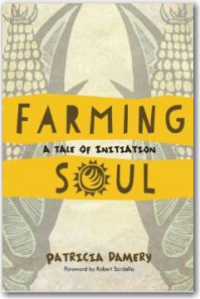 In the Foreword to the second edition, Robert Sardello states, “What differentiates this book from being an autobiography is the invitation to enter a unique form of initiation, one that seems so suitable to this age, this time, our given circumstances, now. This story is really a myth, a myth of the future.” A psychological and spiritual reckoning, ‘Farming Soul’ questions theories and assumptions that date back to the early 1900′s and the days of Freud, assumptions which have too often separated spirituality from psychology.
In the Foreword to the second edition, Robert Sardello states, “What differentiates this book from being an autobiography is the invitation to enter a unique form of initiation, one that seems so suitable to this age, this time, our given circumstances, now. This story is really a myth, a myth of the future.” A psychological and spiritual reckoning, ‘Farming Soul’ questions theories and assumptions that date back to the early 1900′s and the days of Freud, assumptions which have too often separated spirituality from psychology.
Suffering the trials of her own individuation process, Patricia Damery finds answers through a series of unconventional teachers and her relationship to the psyche and to the land—answers that are surprisingly deeply intertwined. One strand of ‘Farming Soul’ is about redeveloping a relationship to the land—Mother Earth—being rooted in a particular place and being guided by the tenets of Rudolf Steiner’s Biodynamic® Agriculture. Another strand is about Damery’s professional path of becoming a Jungian analyst, a path filled with review committees and unexpected and unorthodox teachers. It offers perspective on the complicated dynamic of therapist/patient bond and individuation, and a personal account of when one must step out on one’s own. Bringing together paths of spiritual, ecological, and psychological exploration, Farming Soul is a courageous offering that will help reconnect us to our deeper selves, the often untouched realities of soul, and at the same time ground us in our physical relationship to self and Mother Earth.
From my Review
Damery’s memories, dreams and reflections are woven from the warp and woof of her experiences arising out of analysis, meditation, shamanism and farming. “I understood,” she writes, “that the ‘garment of brightness’ from the Tewa song was being woven for me, and that, in time, perhaps I could ‘walk fittingly’ on this earth.”
Farmers, psychologists and other seekers on the path will find many correlations between their own journeys and the one that so beautifully unfolds in “Farming Soul.” Damery’s garment of brightness is kind lamp for eager eyes. Read the full review here.
Damery, a Jungian analyst and biodynamic farmer in the Napa Valley, is also the author of Goatsong and Snakes.
You May Also Like: New edition of ‘Snakes’ by Patricia Damery
Malcolm R. Campbell is the author of heroes’ and heroines’ journey novels and paranormal short stories, including “Moonlight and Ghosts.” “Moonlight and Ghosts” was inspired, in part, by his experiences with meditation techniques and his work as a home manager at a center for individuals with developmental disabilities.


July 3, 2014
A thousand or so books with no place to go (in my house)
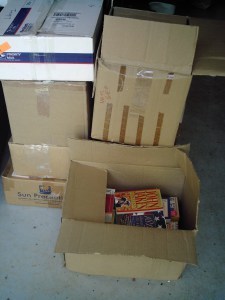 I’m glad the new public library is open. As the busiest library in the regional system, the Jefferson, Georgia public library needed to get out of its old, cramped facility. The new facility opened June 27 in half of an old grocery store building and the result is a lot of upscale space.
I’m glad the new public library is open. As the busiest library in the regional system, the Jefferson, Georgia public library needed to get out of its old, cramped facility. The new facility opened June 27 in half of an old grocery store building and the result is a lot of upscale space.
This is where the books in my garage play into the equation. After years of moving stuff from one house to another, my wife and I are downsizing. I’ve already taken about forty sacks of old magazines to the recycling center. But the books–some 15 boxes–aren’t going to be thrown away.
These usually don’t go into the library’s collection. Most are sold by the Friends of the Library group at the annual book sale to help raise money for more programs. Our library will probably have this year’s sale in the fall. Meanwhile, a few books went to the Berry College Library, a couple of boxes went to the library in nearby Talmo, and the rest have been waiting for the Jefferson library to finish moving from the old building to the new building.
In general, I don’t like disposing of books. On the other hand, the place where I’m sitting right now is a home and not a book storage facility. I hope the books find new readers when the next book sale comes along. Needless to say, I’m not going to the sale. I know it’s for a good cause, but seriously, I don’t want to see a thousand books coming back into the garage.
One box went to the library today, but there are more to go in the coming weeks.


July 2, 2014
Public Invited to Glacier’s Noxious Weed Blitz
from NPS Glacier:
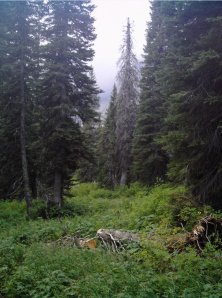 Glacier National Park’s Citizen Science Program announces two opportunities to help with early detection of invasive plants along park trails: Noxious Weed Blitz on July 15 and an online training course for the Invasive Plants Citizen Science program. Both opportunities are free of charge and open to the public.
Glacier National Park’s Citizen Science Program announces two opportunities to help with early detection of invasive plants along park trails: Noxious Weed Blitz on July 15 and an online training course for the Invasive Plants Citizen Science program. Both opportunities are free of charge and open to the public.
The fifth annual Noxious Weed Blitz will take place on Tuesday, July 15 from 10:00 a.m. to 4:00 p.m., meeting at the park’s community building in West Glacier. Participants will be trained to assist the Invasive Plant Management Program by learning to identify, map, and pull invasive plants. A free lunch will be provided by the Glacier National Park Conservancy. Be prepared to spend the afternoon in the outdoors, pulling invasive plants. Please bring gloves for hand pulling, footwear for hiking, and drinking water. Please RSVP if you would like to attend.
An online training opportunity teaches participants how to identify five targeted invasive plants, conduct surveys, and map locations of invasive plants using GPS units. Once training has been completed, visitors may check-out GPS units from the Crown of the Continent Research Learning Center to detect invasive plants while in the park. The online training program can be accessed http://www.crownscience.org/getinvolved/citizen-science/noxious-weeds.
The Invasive Plant Management Program at Glacier manages non-native invasive plants that displace native flora, interrupt ecological processes, or degrade natural scenery. Most infestations of invasive plants in the park are closely correlated to disturbed areas such as roadsides, recreational areas, and construction sites. However, the 700 miles of backcountry trails also provide a corridor for invasive plants to spread and monitoring is often difficult.
In 2008, the Invasive Plant Management Program and Crown of the Continent Research Learning Center established a citizen science program to enlist the help of the public to map the spread of invasive species in the backcountry. The Citizen Science Program, now in its ninth year, is supported by the Glacier National Park Conservancy, fostering stewardship while providing critical baseline information on Common Loons, mountain goats, pikas, and invasive plants. For more information about the Crown of the Continent Research Learning Center visit http://www.crownscience.org.
Attending the Noxious Weed Blitz or completing online training enables participants to continue monitoring invasive plants during future hikes in the backcountry. To sign-up for the Noxious Weed Blitz or learn more about the event please contact the Crown of the Continent Research Learning Center at 406-888-7986 or glac_citizen_science@nps.gov.
-
This has been a successful program in past years. I hope there’s a good turn out for it this summer.


June 26, 2014
USS Ranger added to Washington State Heritage List
The decommissioned (1993) and mothballed aircraft carrier USS Ranger (CV-61/CVA-61) was added to the State of Washington’s Heritage Register on Friday. The carrier, which has been scheduled for scrapping this year, is currently at the Naval Base Kitsap in Bremerton, Washington.
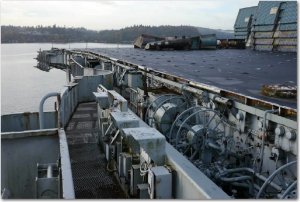
The application form includes multiple interior and exterior photographs.
Acceptance to a state’s register of historic places typically occurs when the state preservation department accepts and passes on a national register of historic places domination for an object, structure or site within the state.
According to the national register application, “”Despite being berthed in the inactive reserve fleet in Bremerton since 1993, Ranger’s current condition is outstanding, particularly inside. Any visitor would wonder why the ship wasn’t heading back to sea, and any shipmate would certainly know his way around. Much of the current condition of the ship is attributable to the excellent material condition at decommissioning and to the continuing  mainntenance it has undergone since being ‘moth-balled.’”
mainntenance it has undergone since being ‘moth-balled.’”
Acceptance to the state and national registers usually carries no obligation on the owner of a historic property, so unless other efforts to save the ship are successful it seems likely that the navy’s plans to scrap the ship will not be altered. (This is supposition on my part and not based on a comment from the navy.)
It’s nice to see the listing regardless of the ultimate fate of the carrier.
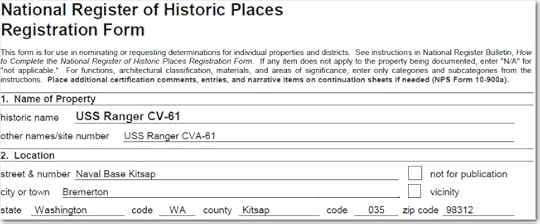
Click on the graphic to read a PDF copy of the nomination form
Author Malcolm R. Campbell’s novel “The Sailor” was inspired by his experiences on board the USS Ranger during the Vietnam War.


June 23, 2014
On location: your childhood growing up place
“Everywhere that July in 1963 there were the pines, their long needles shimmering in a faint wind under the hot subtropical sun. In the country there were empty dirt roads, rutted by mule carts. In the towns, sprawled unpainted shacks without windows. Ancient Negro women sat fanning themselves with palm leaves as they stared drowsily from rickety porches at their zinnias and coral vines and heavy-scented honeysuckle bushes. Moss-draped oaks and lacy chinaberry trees shaded sandy dooryards. Scrawny dogs, the flies buzzing at their noses, slept among ragged-feathered chickens poking for scratch feed. Locusts whine from tall magnolias and the steady pitch of power saws. But mostly it was those pines and the tang of their resiny branches and the dark straightness of their trunks. All of it looked like the south of the novelists and the poets, heavy with antiquity, romance and misery.” – Gloria Johoda in “The Other Florida.”
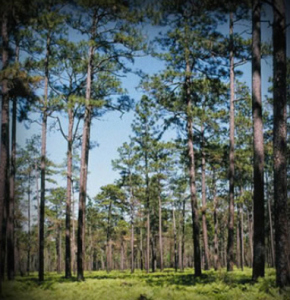 I was in college in 1963 when my friend Gloria Jahoda wrote those words. Like me, she wasn’t born in Florida, but in her now-classic book about the state’s panhandle she observed and wrote about what many long-time residents no longer noticed or took for granted. “The Other Florida” was other because it wasn’t filled with tourist attractions, widely known beaches and movie stars.
I was in college in 1963 when my friend Gloria Jahoda wrote those words. Like me, she wasn’t born in Florida, but in her now-classic book about the state’s panhandle she observed and wrote about what many long-time residents no longer noticed or took for granted. “The Other Florida” was other because it wasn’t filled with tourist attractions, widely known beaches and movie stars.
Other than a few childhood poems, I wouldn’t write about the other Florida until recently. My family moved there from Oregon just in time for me to enter the first grade. Out of the culture shock of the move, I also saw the place I would live for 18 years through the eyes of an outsider.
Yes, my family went to St. Augustine, Tampa, Daytona Beach and Key West, stopping at many gaudy tourist attractions in between. But all that was crowded and nearly fake with an overlay of commercial glitz and I was always happy to be home even though much of the panhandle was considered backward and impoverished in spite of having the state capital in the middle of it.

The Oaks is abandoned now, but this was my favorite place to eat down at the coast
I haven’t been back to north Florida since the mid-1980s when my parents died and my brothers and I closed up and sold the house the family had lived (by then) for some 35 years.
In my childhood days, I learned the territory like most kids did…swimming in clear, cold sinkholes, camping with the Boy Scout Troop in the piney woods, hanging out with friends at our pristine and uncommercialized beaches, exploring the Florida Caverns at Marianna, deep sea fishing in boats that went out from St. Marks, learning the voices of Snake Birds and Limpkins at Wakulla Springs, delivering newspapers throughout my neighborhood, marching in parades downtown with the high school band. . .

We lived in Tallahassee in a day when mule wagons were still on the streets and many homes were built on unpaved, red clay roads.
I saw what Jahoda saw, partly because I was new, partly because the outdoors was our playground in days before the Internet, and partly because my folks arranged day trips to may special places within the confines of this map. In the days before high gasoline prices, my best thinking place was my 1954 Chevy on a dark country road at night. I don’t know what I solved anything, but I saw a lot on the hundreds of miles of roads I saw every week.
Looking Back
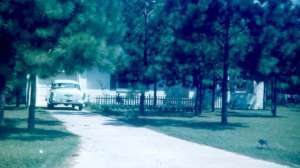
There were 40 pine trees in our yard. Plenty of pine straw to take.
If you’re a writer, I urge you to look back to your childhood places and ponder what it was like, what there was to do, what the people were like, and what kinds of stories and legends you heard. Whether you were happy, sad, or borderline average during those days, the memories are potentially very potent.
In looking back, I’ve written (or am in the process of writing) stories on that map set in Carrabelle and nearby Tate’s Hell Swamp, Marianna and the nearby Bellamy Bridge and Chipola River, Tallahassee, St. Marks, Wakulla County, and the barrier islands. My novella in progress is set at a fictional town not too far from Weewahitchka. You can probably find a similar handful of towns near your childhood home. Each has its unusual traditions, the stories people hope everyone has forgotten, legends, ghostly tales, and plenty of Mother Nature.
Florida seems strange to those who did not live there. The same can be said for other places I’ve lived, worked or visited: Northern Illinois, Minnesota, San Francisco, Montana, North Carolina, and North Eastern Georgia. For a writer, a lot of the appeal of going home (literally or figuratively) for stories is the differentness of the place. That adds a lot of appeal to a story. Take a Florida tradition, add in the weather and the pines, toss in a ghost story, and pretty soon you are telling something fresh and knew and page-turning.
You can ramp up your stories with old memories, smiling again with the the joys, possibly even finding closure for the sorrows; your issues, your cares, your friends, your slings and arrows, your memories can be puzzled and camouflaged into your story. They bring strength and depth because you lived them and know what they were all about.
I’ve about wrapped up my Weewahitchka-area story. It gets a potent childhood issue off my plate of memories. More about that later if the publisher likes the story. I think I’ve written some of my best stuff about the places where I grew up because there is so much “material” there I can turn into fiction. That’s why I often urge other writers to look at the towns where they grew up with fresh eyes and see if they can find some stories there.
–Malcolm

$1.99 on Kindle
My stories with Florida settings include “The Seeker” (Tallahassee, Carrabelle, Tate’s Hell), “Emily’s Stories” (Tallahassee and St. Marks), “Cora’s Crossing” (Marianna), “The Land Between the Rivers” (Tate’s Hell) and “Moonlight and Ghosts” (Tallahassee).


June 19, 2014
Weather Conditions Impact Glacier Park
updated NPS information as of June 18:
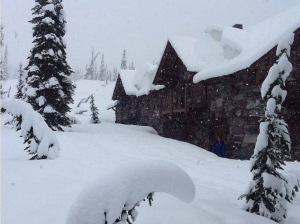
Sperry Chalet – NPS photo
St. Mary Campground Closed due to standing and running water, and debris from Wild Creek and other run-off water. There were approximately 10 campers at the St. Mary Campground last night, and all left this morning on their own, prior to campground closure.
Access to the Kintla Lake area closed at the head of Big Prairie – 7 miles north of the Polebridge Entrance in the North Fork District of the park. Travel in the North Fork area of Glacier National Park is not advised at this time. There is standing water in several areas.
Red Eagle Lake Trailhead, near the 1913 Historic Ranger Station near St. Mary is closed.
Sand bags were deployed in the administrative area of St. Mary on the east side of Glacier National Park, responding to rising/flooding Divide Creek.
Pre-evacuation planning underway for the St. Mary area of National Park Service administrative and housing areas (approx. 30-40 people), and for the Many Glacier Hotel area. No evacuations have been initiated at this time!
No work is being conducted on plowing the Going-to-the-Sun Road at this time. Crews moved plowing equipment to lower locations yesterday as snow began to fall and more snow was predicted.
NPS employees are at Sperry Chalet conducting seasonal preparation activities and report 14-16 inches of snow since Tuesday morning. It was snowing again this morning at Sperry Chalet. Photos attached! Sperry Chalet is located on the west side of the park, near the Continental Divide.
Park personnel continue to monitor and access the situation across the park, making preparations in the event of any evacuations and staging equipment to respond as needed. Park personnel are in regular communication with the National Weather Service. All visitors are encouraged to use caution during this time of increased moisture.
from NPS Glacier National Park, as of June 16:
WEST GLACIER, MONT. – Snow conditions, cool weather, and debris from snow slides are challenging some spring opening operations for trails, facilities and roads in Glacier National Park. Snow accumulations in the park are above average this year and spring snowmelt has varied at different locations.
Numerous trails in Glacier National Park are still snow-covered. Park staff report damage to trails and backcountry campsites due to snow slides and large amounts of avalanche debris. The Ptarmigan Falls Bridge and Twin Falls Bridge have been removed due to winter damage and hazardous conditions. Temporary bridges are expected to be installed by early July. The Iceberg Lake Trail is closed to stock use until permanent repairs to the Ptarmigan Falls B ridge are complete. Permanent repair work on both bridges is anticipated to begin this fall.
Extensive avalanche debris has impacted the Trout Lake Trail. Hikers are not encouraged to use this trail, or it is recommended that hikers have route-finding skills to traverse the debris.
Trails may traverse steep and sometimes icy snowfields and hikers are strongly advised to have the appropriate equipment and skills to navigate such areas, or perhaps visit those areas once conditions improve. Please visit the park’s website for current trail status at http://www.nps.gov/glac/planyourvisit/trailstatusreports.htm. Please report any hazardous or unusual trail or backcounty conditions by calling the park at 406-888-7800.
Frozen and damaged sewer and water lines caused some delays in seasonal opening activities for utilities park-wide. Rising Sun and the Swiftcurrent cabin areas experienced damaged water lines. The Apgar and Lake McDonald areas experienced issues with frozen sewer lines, and some broken water lines. The Cutbank, Many Glacier and Two Medicine Campgrounds experienced delayed openings due to abundant snow accumulation and slow snow melt.
A snow slide in the Alps area of the Going-to-the-Sun Road, about five miles west of Logan Pass, wiped out about 20-30 feet of rock wall along the road. Several new slide paths across the road have been encountered this spring, including the need for extensive snow and debris cleanup.
Snow removal operations on the Going-to-the-Sun Road continue with road crews working near the Big Drift and Lunch Creek areas east of Logan Pass. Above average snow accumulation and cool June temperatures have provided challenges for snow removal operations. The snow depth at the Big Drift is estimated to be about 80 feet, larger than recent years. Once the snow is removed, a thick layer of ice on the road is anticipated.
In addition to snow removal, road crews are working to install over 400 removable guard rails, sweep the road of rock debris, and clear snow from Logan Pass Visitor Center facilities including sidewalks and trails. Park road crew employees have begun working overtime in an effort to accomplish snow removal goals in a safe and timely manner, as well as other park employees assisting in the hand work to remove snow around facilities.
Snow removal and plowing progress, including images, can be found at http://home.nps.gov/applications/glac/gttsroadplow/gttsroadplowstatus.cfm.
Currently, visitors can drive about 16 miles from the West Entrance to Avalanche on the west side of the park, and one mile from the St. Mary Entrance to the foot of St. Mary Lake on the east side. It is anticipated that there will be vehicle access to the Jackson Glacier Overlook area on the east side of the Going-to-the-Sun Road by this weekend, but it is dependent on weather conditions. Vehicle access to Logan Pass, and beyond Avalanche on the west side of park, is unknown at this time.
Hiker-biker access is currently available from Avalanche to the Loop on the west side, and from St. Mary to Rising Sun on the east side. For current hiker-biker access and park road status, visit http://home.nps.gov/applications/glac/roadstatus/roadstatus.cfm. For additional questions about Glacier National Park, visit www.nps.gov/glac or call 406-888-7800.
-
-


June 16, 2014
Glacier Park: Proposed Fish Passage Barrier
from NPS Glacier National Park:
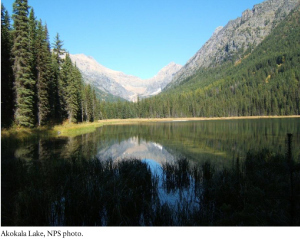 WEST GLACIER, MONT. – Public comments are encouraged on a recently completed environmental assessment for a proposed fish passage barrier downstream of Akokala Lake in the North Fork District of Glacier National Park. Comments are due by July 7, 2014. The Akokala Creek Fish Passage Barrier Environmental Assessment is available at http://parkplanning.nps.gov/AkokalaFishBarrier. (Click on document list to read.)
WEST GLACIER, MONT. – Public comments are encouraged on a recently completed environmental assessment for a proposed fish passage barrier downstream of Akokala Lake in the North Fork District of Glacier National Park. Comments are due by July 7, 2014. The Akokala Creek Fish Passage Barrier Environmental Assessment is available at http://parkplanning.nps.gov/AkokalaFishBarrier. (Click on document list to read.)
Akokala Lake is one of the last bull trout supporting lakes on the west side of the park and is at risk of invasion by non-native lake trout, which are known to have severe detrimental effects on native fish populations. The drainage is also susceptible to invasion by rainbow trout and possibly brook trout. Monitoring and genetic testing show hybridization between westslope cutthroat and rainbow trout has already begun to occur in Akokala Creek. Brook trout can out-compete westslope cutthroat trout and hybridize with bull trout.
The environmental assessment analyzes two alternatives: 1) Alternative A-No Action, and 2) Alternative B-Construct a fish passage barrier on Akokala Creek. The preferred alternative is to construct a fish passage barrier (Alternative B). A fish passage barrier would prevent additional non-native fish from accessing Akokala Lake and the upper Akokala drainage, and reduce or eliminate further expansion of westslope cutthroat-rainbow trout hybridization. By protecting the drainage against non-native invasive fish, this project would also help safeguard important habitat refugia for native fish confronting the stressors of climate change.
The environmental assessment, as well as additional information is available at http://parkplanning.nps.gov/AkokalaFishBarrier. Public comments can be made directly through this website, or written comments may be mailed to Superintendent, Glacier National Park, Attn: Akokala Fish Barrier EA, PO Box 128, West Glacier, Montana 59936.
-
Personally, I support the fish barrier due to the risk to native specifies from non-native species.


June 14, 2014
Who are all those people in your stories?
“Revealing small tidbits about your characters as you go along helps engage your readers. We know how important that is in dropping clues and red herrings, but it’s also an excellent way to have your readers identify with your characters — even the villains. This is especially important in a mystery because it isn’t until the end of the story (hopefully) that the reader figures out who is truly the villain.” – Gayle Trent
I like author Gayle Trent’s advice about adding small tidbits of information about characters as stories progress, taken from Adding Dimension to Your Characters, because it mirrors the way most of us learn about the people in our lives. We meet a person, note what they look like, discover whether they seem to like us or pose a threat, and then the longer we’re around them, the more bits and pieces we pick up. Real life people seldom appear with a resume.
I’ve been thinking about all those people in our stories and how we portray them ever since reading a beginning writer’s question on a writing forum. She wanted to know how to figure out what a character in a proposed story looked like, sounded like, and acted like.
The question puzzled me, not because it’s irrelevant, but because the writer seemed to have no idea what the character was like. Early on, most writers need to figure out how best to portray major and minor characters in a story. Usually, though, a writer has a story idea and sort of “sees” the people involved: the challenge, then, is taking what one “sees” and figuring out how to describe the character on paper.
By “see,” I mean seeing the character the way one “sees” somebody in their memory when they think about a family member, colleague, or friend.
Rushing the Plot?
I often wonder if a writer is rushing the plot down on paper before it’s ready when s/he decides to write the story but doesn’t know what any of the characters are like. When I think about writing a “boy meets girl” story, it’s hard for me to think about the idea without “seeing” what they boy and girl look like, act like, and believe in.
Fortunately for me, my imagination is very visual. That is, my potential story or story in progress presents itself to my thoughts like watching a movie. When I write a scene, I’m watching it the way I watch a movie or the way I see an event from the past in my memory.
If you don’t see your story this way as you write, here are a few ideas for learning about your characters:
Readers like good guys with flaws and bad guys with a few good points. Real people are seldom 100% angels or 100% devils.
Write a few pages of the story, and watch who shows up. As you write about your protagonist, do you “see” him taking actions and having conversations? Do you see the antagonist working his or her evil plots? If you do, then your characters and their traits may well develop as you tell the story. As you learn about them, you can go back and begin to describe them.
Interview your character: This works best if you type a list of questions, print them out, and then quickly hand write the answers. Questions might include: how old are you, what color is your hair, what’s your hobby, what’s your job, what’s your favorite movie, what excites you, what depresses you, etc. Pretend like your conducting a job interview and write down the answers as quickly as you can.
Imagine your character. Relax and pretend you are sitting in a place associated with your story whether it’s an office, ship, war zone, forest, old house or whatever. Pretend you’re sitting there when your character shows up. Watch them. How do they act? What do they look like? What’s their favorite color or song or book?
I don’t like using real people as models, but sometimes it’s hard not to when they seem to fit the bill. What makes these real people stand out in your mind? If you were going to sketch their picture with a pencil, what physical characteristics would stand out?
Elsewhere, I wrote a post about characters and themes. When you have a so-called theme for your minor characters, you’re providing the reader with a few defining points each time they appear. They pronounce words incorrectly. They shout. Their hair is always messed up. They wear the same color all the time. They swear a lot. They tell the same joke in multiple ways. You can sketch in characters quickly by getting readers used to identifying them with their theme.
It’s important to discover why readers might care about your protagonist and what they fear/dislike about your antagonist. Without resorting to trite, stock characters out of books and movies, what does this suggest to you. What actions/traits make a character lovable? What actions/traits make a character despicable? As you think of this, you might begin to see what they look like, what they might do (good or bad) and the kinds of friends they have.
Rushing the story ruins the story. Rushing character development tends to create either flat stereotypes or too many details. As your story unfolds during the first draft, I think you will “see” your characters more and more clearly in your mind. You can always go back and add detail earlier in the story if you need it. You don’t need to know everything about every character when you start writing.
I like the idea of discovering a story as I write. This doesn’t work for the people who insist upon an outline. But as the story unfolds, the characters become clear. Now I can go back and fill in the details and make them more three-dimensional.
In many stories, the plot defines the kinds of characters you need. The more you follow the plot, the more you see who’s in it.


June 12, 2014
Lake McDonald Lodge Celebrates Centennial on June 14th
from the Glacier Park Conservancy:
Glacier National Park Conservancy and Glacier National Park Lodges
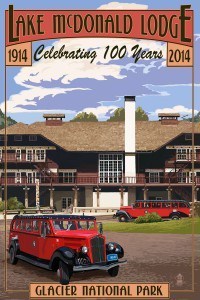 Lake McDonald Lodge will celebrate its centennial on June 14th, 2014.
Lake McDonald Lodge will celebrate its centennial on June 14th, 2014.
Get ready for complimentary red bus transportation from the Apgar Visitor Center to Lake McDonald Lodge, historic walking tours, ranger programs, and more! Festivities will begin at 1 pm and end at approximately 9:15 pm.
PROGRAM
12:30 pm-8:00 pm: Complimentary red bus tours will operate on a continuous loop between the Apgar Visitor Center and Lake McDonald Lodge. Visitors are encouraged to park at the Apgar Visitor Center as parking is limited at the lodge.
1:00-2:00 pm: Historic Walking Tours at Lake McDonald Lodge
2:00 – 4:00 pm: Silent Auction for Old Hickory Chair begins – Proceeds benefit Glacier National Park Conservancy
2:00 pm: Opening comments
2:30 pm: Glacier Park Foundation presentation
3:30 pm: Lake McDonald Lodge Dedication
4:00 pm: Old Hickory Chair Silent Auction Winner Announced
5:00-9:00 pm: Dine on your own at Lake McDonald Lodge with centennial themed specials
6:00-8:00 pm: Movies in the auditorium
8:30 pm: Ranger-led evening program on Lake McDonald history in the auditorium
-
I can’t make the trip from Georgia, but for those of you who live closer, this ought to be a great event.
Malcolm R. Campbell is a former Glacier National Park hotels seasonal employee and the author of several novels set in the park.


June 9, 2014
Were you a Many Glacier bellman in 1964?
If so, can you find yourself in either of these snapshots of the bellmen banquet in August of 1964 in the Many Glacier Hotel dining room?
I remember we all ordered the most expensive meals on the menu. A friend of the bellmen who owned a well-known Chicago restaurant at the time, ordered multiple bottles of wine and had them delivered to our table.
Maybe it was the wine, or the number of years that have gone by or the fact that we had two sets of twins in the bellmen group that year, but I cannot ID the people in these pictures any more. Oh, well, I do know that I’m the third person back on the left side of the table and that my room mate Marc Miller is the nearest person on the right side of the table.
Otherwise?????
Were you there?






